#amyotrophic lateral sclerosis
Text
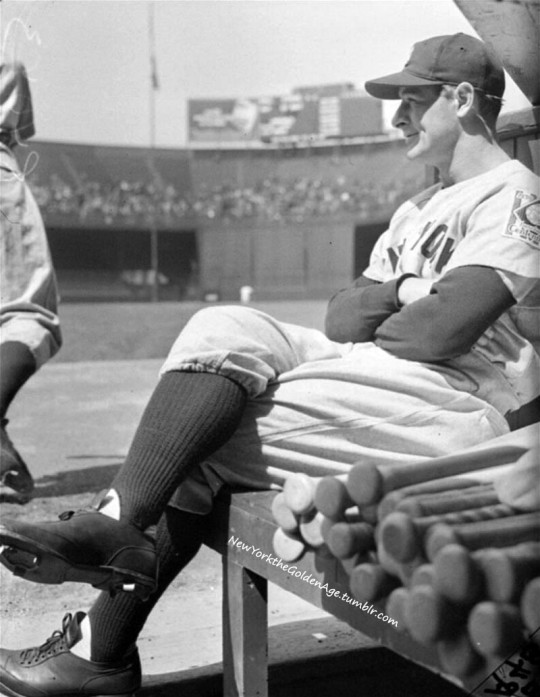
On May 2, 1939, Lou Gehrig took himself out of the Yankees' lineup after having appeared in 2,130 consecutive games. He was suffering from amyotrophic lateral sclerosis (ALS or, as it came to be known, Lou Gehrig's Disease), which would kill him two years later.
Photo: Associated Press
#vintage New York#1930s#Lou Gehrig#NY Yankees#ALS#amyotrophic lateral sclerosis#vintage baseball#May 2#2 May
59 notes
·
View notes
Text

Neurotoxic Relationship
Lab-grown neural network model bearing dysregulated TDP-43 protein – a feature of neurons in certain neurodegenerative diseases – reveals accumulated NPTX2 protein, that is confirmed in the brains of patients with amyotrophic lateral sclerosis and frontotemporal lobar degeneration. NPTX2 could thus represent a novel therapeutic target
Read the published research article here
Image from work by Marian Hruska-Plochan and colleagues
Department of Quantitative Biomedicine, University of Zurich, Zurich, Switzerland
Image originally published with a Creative Commons Attribution 4.0 International (CC BY 4.0)
Published in Nature, February 2024
You can also follow BPoD on Instagram, Twitter and Facebook
#science#biomedicine#immunofluorescence#neuroscience#biology#brain#ALS#lou gehrig's disease#motor neurone disease#mnd#amyotrophic lateral sclerosis#neurons#organoid
14 notes
·
View notes
Text
Saskatchewan says it will now cover two more treatments for amyotrophic lateral sclerosis (ALS) under the province's publicly funded drug plan.
The province said that effective Friday, eligible patients can now consider Albrioza and the tablet form of Radicava for treatment.
Advocates say the decision can make a difference for those with ALS.
Full article
Tagging: @politicsofcanada
#cdnpoli#canada#canadian politics#canadian news#canadian#saskatchewan#pharmacare#healthcare#medications#ALS#amyotrophic lateral sclerosis#medication
17 notes
·
View notes
Text
And now I've been placed in the very awkward position of telling my cousin in Tel Aviv that her father is going to die on Thursday, because none of her family speaks to her and she doesn't speak to them and my mom doesn't want to be the one to break the news because it might piss off her sister. How do you tell someone that?
Like, hey, not sure if you're aware, but your dad is going to die on Thursday. What a fucking surreal thing.
I am hoping someone reached out to her and told her so I am not the first she's hearing it from, but I have to make sure she knows.
2 notes
·
View notes
Photo


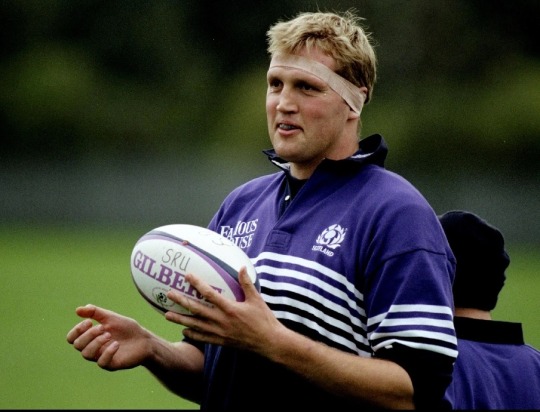



Happy Birthday to ex Scottish Rugby Player Doddie Weir..
Born George Wilson Weir on this day 1970 in Edinburgh, Doddie was educated at Daniel Stewart’s and Melville College and given the school’s heritage with the sport, and Doddie’s size, it was only natural he would take up the rugby.
After his education finished he played for Stewart’s Melville FP, the FP stands for former pupil, he then went on to play for Melrose in the Scottish Borders, and was part of the team that won six Scottish club championships.
He later moved to England in 1995 to join the Newcastle Falcons, helping them win the Premiership in 1998.
Lock Weir was capped 61 times by Scotland, and was part of the victorious Lions tour to South Africa in 1997.
He moved back to Scotland to join the newly reformed Borders team in 2002 where he remained until his retirement from professional rugby. He finished his playing career together with Gary Armstrong at Borders Reivers in 2004.
In 2016 Doddie was diagnosed with Motor Neurone Disease (MND) in 2016 and made his diagnosis public the following summer. Although the average life expectancy is between one and three years, he has defied the odds to keep battling and his charity, the My Name'5 Doddie Foundation, has raised more than £4million for research into a cure. Doddie was also told that a year later he would not be able to walk, he is still walking to this day, a testament to the determination and fighting spirit of this remarkable man.
And while it put a stop to Doddie’s usually hectic schedule of appearances and dinners, the 61-times capped Scotland internationalist has enjoyed spending time at home with his family.
A big favourite with the Murrayfield crowd, the 6ft 6in lock was famously described by the late ommentator Bill McLaren as as being “on the charge like a mad giraffe”.
In 2018 The Doddie Weir Cup was inaugurated, a perputual Rugby Union trophy to be played between Scotland and Wales, the first match in Cardiff in November that year was won by Wales, as was the second match, of course this years match has not been played due to the pandemic.
Speaking on the most recent My Name’5 Doddie Foundation Dodcast, hosted by foundation CEO Jill Douglas, Doddie said: “This lockdown I’ve quite enjoyed because it’s allowed me to spend time with the family.
“It’s been quite good to re-charge the batteries. There’s no doubt about it, I’m fighting MND a bit more than I was a year ago. We’re fighting it hard, but the farm has been unbelievable. It’s allowed me to get out for a bit of fresh air, with friends and family, and we’ve got an outside gym that I use once or twice a week.“I still think I’m doing quite well – I’m still getting up and down the stairs unaided and enjoying a wee bit drink at night.”
Doddie explained “As a bloke you just think ‘I’m fine’, but with this that’s not quite the case. Basically it’s a muscle wasting disease and that’s how in the later life of MND it’s horrific because you need help everywhere.
"Basically your muscles in your legs disappear so you can’t walk; you can’t really eat, and then your muscles within your speech disappear so you can’t speak; you can’t swallow and can’t breath so it’s horrific what happens.
”….“But it’s such a debilitating condition and there’s nothing out there that can help any patient with MND.
He has signed a “Do not resuscitate” (DNR) over two years ago.
In February 2020 Doddie said his decision to refuse potentially lifesaving CPR came after a tough chat with his sons Hamish, 18, Angus, 17, and Ben, 15. "I’ve had to talk to them about DNR. We’ve just signed a document for that at the moment, which isn’t easy.”
He added: “You just have to be honest and open and they took it really well.”
The remarkable Doddie Weir continues to fight his affliction, more than 50 people joined him in the event last Tuesday to raise funds to support research into the causes of MND. The occasion was to celebrate Mr Weir’s annual My Name’5 Doddie Foundation (MNDF) Scotland Golf Day and earned the charity a five figure sum.
Doddie currently lives with his family on a farm which he bought in the Scottish Borders
You can read more about and donate to Doddie’s charity foundation here https://www.myname5doddie.co.uk/about
8 notes
·
View notes
Photo

AMY WINEHOUSE
PORTRAIT BY TECHNODROME1
#Amy winehouse#black#rip#singer#legend#hair#woman#drawing#music#young#drugs#iconic#real one#perosn#culture#pop#song writer#talent#fame#amyotrophic lateral sclerosis
4 notes
·
View notes
Text
Epigenomic analysis sheds light on risk factors for ALS
New Post has been published on https://thedigitalinsider.com/epigenomic-analysis-sheds-light-on-risk-factors-for-als/
Epigenomic analysis sheds light on risk factors for ALS
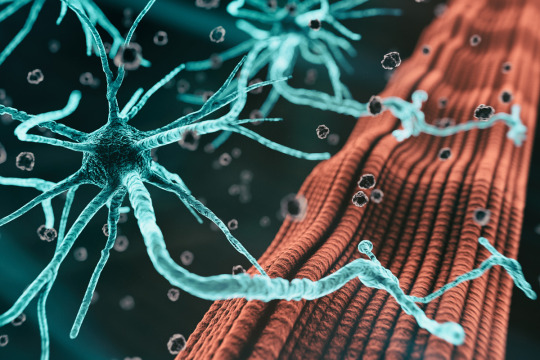

For most patients, it’s unknown exactly what causes amyotrophic lateral sclerosis (ALS), a disease characterized by degeneration of motor neurons that impairs muscle control and eventually leads to death.
Studies have identified certain genes that confer a higher risk of the disease, but scientists believe there are many more genetic risk factors that have yet to be discovered. One reason why these drivers have been hard to find is that some are found in very few patients, making it hard to pick them out without a very large sample of patients. Additionally, some of the risk may be driven by epigenomic factors, rather than mutations in protein-coding genes.
Working with the Answer ALS consortium, a team of MIT researchers has analyzed epigenetic modifications — tags that determine which genes are turned on in a cell — in motor neurons derived from induced pluripotent stem (IPS) cells from 380 ALS patients.
This analysis revealed a strong differential signal associated with a known subtype of ALS, and about 30 locations with modifications that appear to be linked to rates of disease progression in ALS patients. The findings may help scientists develop new treatments that are targeted to patients with certain genetic risk factors.
“If the root causes are different for all these different versions of the disease, the drugs will be very different and the signals in IPS cells will be very different,” says Ernest Fraenkel, the Grover M. Hermann Professor in Health Sciences and Technology in MIT’s Department of Biological Engineering and the senior author of the study. “We may get to a point in a decade or so where we don’t even think of ALS as one disease, where there are drugs that are treating specific types of ALS that only work for one group of patients and not for another.”
MIT postdoc Stanislav Tsitkov is the lead author of the paper, which appears today in Nature Communications.
Finding risk factors
ALS is a rare disease that is estimated to affect about 30,000 people in the United States. One of the challenges in studying the disease is that while genetic variants are believed to account for about 50 percent of ALS risk (with environmental factors making up the rest), most of the variants that contribute to that risk have not been identified.
Similar to Alzheimer’s disease, there may be a large number of genetic variants that can confer risk, but each individual patient may carry only a small number of those. This makes it difficult to identify the risk factors unless scientists have a very large population of patients to analyze.
“Because we expect the disease to be heterogeneous, you need to have large numbers of patients before you can pick up on signals like this. To really be able to classify the subtypes of disease, we’re going to need to look at a lot of people,” Fraenkel says.
About 10 years ago, the Answer ALS consortium began to collect large numbers of patient samples, which could allow for larger-scale studies that might reveal some of the genetic drivers of the disease. From blood samples, researchers can create induced pluripotent stem cells and then induce them to differentiate into motor neurons, the cells most affected by ALS.
“We don’t think all ALS patients are going to be the same, just like all cancers are not the same. And the goal is being able to find drivers of the disease that could be therapeutic targets,” Fraenkel says.
In this study, Fraenkel and his colleagues wanted to see if patient-derived cells could offer any information about molecular differences that are relevant to ALS. They focused on epigenomic modifications, using a method called ATAC-seq to measure chromatin density across the genome of each cell. Chromatin is a complex of DNA and proteins that determines which genes are accessible to be transcribed by the cell, depending on how densely packed the chromatin is.
In data that were collected and analyzed over several years, the researchers did not find any global signal that clearly differentiated the 380 ALS patients in their study from 80 healthy control subjects. However, they did find a strong differential signal associated with a subtype of ALS, characterized by a genetic mutation in the C9orf72 gene.
Additionally, they identified about 30 regions that were associated with slower rates of disease progression in ALS patients. Many of these regions are located near genes related to the cellular inflammatory response; interestingly, several of the identified genes have also been implicated in other neurodegenerative diseases, such as Parkinson’s disease.
“You can use a small number of these epigenomic regions and look at the intensity of the signal there, and predict how quickly someone’s disease will progress. That really validates the hypothesis that the epigenomics can be used as a filter to better understand the contribution of the person’s genome,” Fraenkel says.
“By harnessing the very large number of participant samples and extensive data collected by the Answer ALS Consortium, these studies were able to rigorously test whether the observed changes might be artifacts related to the techniques of sample collection, storage, processing, and analysis, or truly reflective of important biology,” says Lyle Ostrow, an associate professor of neurology at the Lewis Katz School of Medicine at Temple University, who was not involved in the study. “They developed standard ways to control for these variables, to make sure the results can be accurately compared. Such studies are incredibly important for accelerating ALS therapy development, as they will enable data and samples collected from different studies to be analyzed together.”
Targeted drugs
The researchers now hope to further investigate these genomic regions and see how they might drive different aspects of ALS progression in different subsets of patients. This could help scientists develop drugs that might work in different groups of patients, and help them identify which patients should be chosen for clinical trials of those drugs, based on genetic or epigenetic markers.
Last year, the U.S. Food and Drug Administration approved a drug called tofersen, which can be used in ALS patients with a mutation in a gene called SOD1. This drug is very effective for those patients, who make up about 1 percent of the total population of people with ALS. Fraenkel’s hope is that more drugs can be developed for, and tested in, people with other genetic drivers of ALS.
“If you had a drug like tofersen that works for 1 percent of patients and you just gave it to a typical phase two clinical trial, you probably wouldn’t have anybody with that mutation in the trial, and it would’ve failed. And so that drug, which is a lifesaver for people, would never have gotten through,” Fraenkel says.
The MIT team is now using an approach called quantitative trait locus (QTL) analysis to try to identify subgroups of ALS patients whose disease is driven by specific genomic variants.
“We can integrate the genomics, the transcriptomics, and the epigenomics, as a way to find subgroups of ALS patients who have distinct phenotypic signatures from other ALS patients and healthy controls,” Tsitkov says. “We have already found a few potential hits in that direction.”
The research was funded by the Answer ALS program, which is supported by the Robert Packard Center for ALS Research at Johns Hopkins University, Travelers Insurance, ALS Finding a Cure Foundation, Stay Strong Vs. ALS, Answer ALS Foundation, Microsoft, Caterpillar Foundation, American Airlines, Team Gleason, the U.S. National Institutes of Health, Fishman Family Foundation, Aviators Against ALS, AbbVie Foundation, Chan Zuckerberg Initiative, ALS Association, National Football League, F. Prime, M. Armstrong, Bruce Edwards Foundation, the Judith and Jean Pape Adams Charitable Foundation, Muscular Dystrophy Association, Les Turner ALS Foundation, PGA Tour, Gates Ventures, and Bari Lipp Foundation. This work was also supported, in part, by grants from the National Institutes of Health and the MIT-GSK Gertrude B. Elion Research Fellowship Program for Drug Discovery and Disease.
#000#Administration#als#American Airlines#amyotrophic lateral sclerosis#Amyotrophic lateral sclerosis (ALS)#Analysis#approach#Biological engineering#Biology#blood#caterpillar#cell#Cells#chemical#chromatin#coding#communications#data#development#direction#Disease#Diseases#DNA#drug#drug discovery#drugs#engineering#Environmental#filter
0 notes
Link
Dive into the legacy of Kenneth Mitchell, the Star Trek icon who left an indelible mark with his unforgettable roles, courageous battle against ALS, and profound impact on the sci-fi universe. Discover his journey, from portraying Klingons with depth to inspiring with his real-life bravery. Celebrate the star that shines on. #KennethMitchellStarTrekLegacy
0 notes
Text



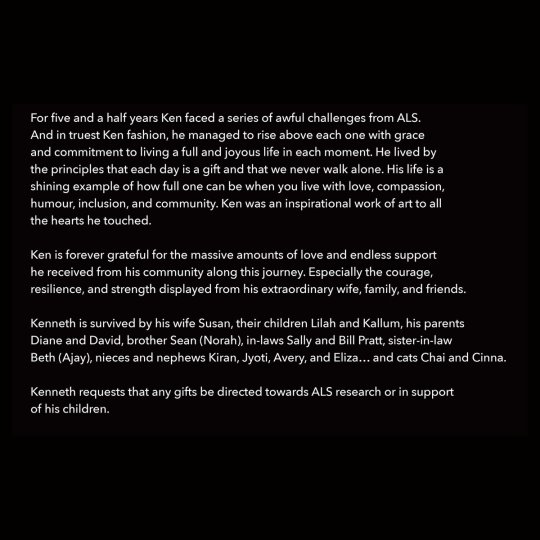
Rest in Peace 🕊️#KennethMitchell, #StarTrek: Discovery and #CaptainMarvel (2019) actor dies after 5 years battle with #ALS, or #AmyotrophicLateralSclerosis. He was 49.
What is Amyotrophic lateral sclerosis (ALS)?
-https://www.cdc.gov/als/WhatisAmyotrophiclateralsclerosis.html
-https://www.mayoclinic.org/diseases-conditions/amyotrophic-lateral-sclerosis/symptoms-causes/syc-20354022
0 notes
Text





ℂ𝕙𝕣𝕚𝕤𝕥𝕞𝕒𝕤 𝕊𝕨𝕖𝕒𝕥𝕖𝕣
ℝ𝕖𝕢𝕦𝕖𝕤𝕥 𝕤𝕖𝕥 𝕟𝕠. 𝟚
𝔸𝕃𝕊, ℂ𝕒𝕟𝕔𝕖𝕣, 𝔽𝕣𝕪𝕟𝕤 𝕊𝕪𝕟𝕕𝕣𝕠𝕞𝕖 𝕒𝕟𝕕 𝕄𝕊
You were able to tell me what diseases you would like to see on your Sims' sweaters. I got more requests than I thought possible. I think that's really great. It shows me that many of you think the same way I do.
Here is the second set of four jumpers in 12 colours.
For the first time all T-shirts are printed with German and English text.
Happy Simming
📁𝔻𝕠𝕨𝕟𝕝𝕠𝕒𝕕 𝕗𝕠𝕣 𝔽𝕣𝕖𝕖
💙 𝔸𝕃𝕊 𝔽𝕚𝕘𝕙𝕥𝕖𝕣 / 𝔸𝕃𝕊 𝕂ä𝕞𝕡𝕗𝕖𝕣 (Amyotrophic lateral sclerosis)
💜 ℂ𝕒𝕟𝕔𝕖𝕣 𝔽𝕚𝕘𝕙𝕥𝕖𝕣 / 𝕂𝕣𝕖𝕓𝕤 𝕂ä𝕞𝕡𝕗𝕖𝕣
🤍 𝔽𝕣𝕪𝕟𝕤 𝕊𝕪𝕟𝕕𝕣𝕠𝕞𝕖 𝔽𝕚𝕘𝕙𝕥𝕖𝕣 / 𝔽𝕣𝕪𝕟𝕤 𝕊𝕪𝕟𝕕𝕣𝕠𝕞 𝕂ä𝕞𝕡𝕗𝕖𝕣
🧡 𝕄𝕊 𝔽𝕚𝕘𝕙𝕥𝕖𝕣 / 𝕄𝕊 𝕂ä𝕞𝕡𝕗𝕖𝕣 (multiple sclerosis)
Also check out the matching pants
ℂℝℙ𝕊 ℂ𝕙𝕣𝕚𝕤𝕥𝕞𝕒𝕤 ℙ𝕁 𝕓𝕠𝕪𝕤 𝕓𝕠𝕥𝕥𝕠𝕞 𝟙
ℂℝℙ𝕊 ℂ𝕙𝕣𝕚𝕤𝕥𝕞𝕒𝕤 ℙ𝕁 𝕘𝕚𝕣𝕝𝕤 𝕓𝕠𝕥𝕥𝕠𝕞 𝟙
ℂℝℙ𝕊 ℂ𝕙𝕣𝕚𝕤𝕥𝕞𝕒𝕤 ℙ𝕁 𝕓𝕠𝕪𝕤 𝕓𝕠𝕥𝕥𝕠𝕞 𝟚
ℂℝℙ𝕊 ℂ𝕙𝕣𝕚𝕤𝕥𝕞𝕒𝕤 ℙ𝕁 𝕘𝕚𝕣𝕝𝕤 𝕓𝕠𝕥𝕥𝕠𝕞 𝟚
Terms Of Use:
link back to original post if you recolor/convert
do not put my content behind Patreon or adfly
#sims infants#sims clothes#thesims4cc#sims with disabilities#the sims resource#sims4awareness#sims 4 awareness#MS#multiple sclerosis#fryns#cancer#cancerawareness#ALS#amyotrophic lateral sclerosis#TSR#disease#zebra strong#fryns syndrome
0 notes
Text
Guide to Life-Sustaining Nutrients: Copper [PREVIEW]
The following is a preview of a Patreon-exclusive newsletter
Click the icon below to support Become Something New for the cost of just one cup of coffee per month for access to this and upcoming Patreon-only content. ☕📖🧠💪
Patreon
Starting at the most vital level, copper is a mitochondrial cofactor, essential for cytochrome C oxidase (complex IV), which completes oxidative phosphorylation to…
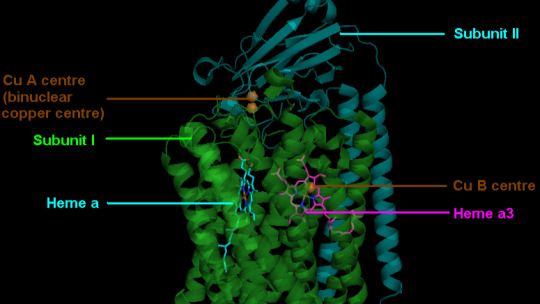
View On WordPress
#adrenaline#aging#allergies#alzheimer&039;s#Amyotrophic Lateral Sclerosis#apoptosis#arterial plaques#arthritis#aspartame#avocado#beauty#biohacking#blood pressure#bone health#cancer#cartilage#chris masterjohn#collagen#cytochrome c oxidase#dark chocolate#dementia#dhea#diabetes#diamine oxidase#disulfiram#dopamine#elastin#epinephrine#ferrous iron#gray hair
0 notes
Text

Problems with Excitability
Details of the structure and functional changes that underlie neurons' impaired excitability characteristic of the neurodegenerative disease amyotrophic lateral sclerosis (motor neuron disease)
Read the published research article here
Image from work by Peter Harley and colleagues
Centre for Developmental Neurobiology, Kings College London, London, UK
Image originally published with a Creative Commons Attribution 4.0 International (CC BY 4.0)
Published in Cell Reports, November 2023
You can also follow BPoD on Instagram, Twitter and Facebook
#science#biomedicine#immunofluorescence#biology#neuroscience#neurodegenerative diseases#amyotrophic lateral sclerosis#Lou Gehrig disease#motor neurone disease#MND
13 notes
·
View notes
Text
Lou Gehrig’s Disease, or ALS: How a Neurologist Can Help
Lou Gehrig’s Disease is severe and extremely debilitating. While there is no cure yet for ALS, there are many systems in place for treating symptoms and managing its progression. Emerging medication is part of the process as are speech and physical therapy, nutritional support, breathing aids, and emotional caregiving.

Read more from Neurology Associates in Leesburg, Virginia: https://neurologyassociatesva.com/lou-gehrigs-disease-or-als-how-a-neurologist-can-help/
0 notes
Text
Just found out that one of my uncles is doing a MAID (Medical Assistance in Dying) passing on Thursday, so that super fucking sucks.
He's been dying of ALS for the last few years, so we knew it was coming, but facing the finality of it is a gut-punch.
1 note
·
View note
Text

How Effective Is Stem Cell Therapy For ALS Patients?
The ALS Stem Cell Treatment seemed to have given a good and strong therapeutic potential as found in various clinical fields…
#Amyotrophic Lateral Sclerosis#Stem cell therapy for ALS#Benefits of Stem cell therapy ALS#stem cell therapy success rate#stem cell therapies in India
0 notes
Text
1939-"The luckiest man on the face of the earth"
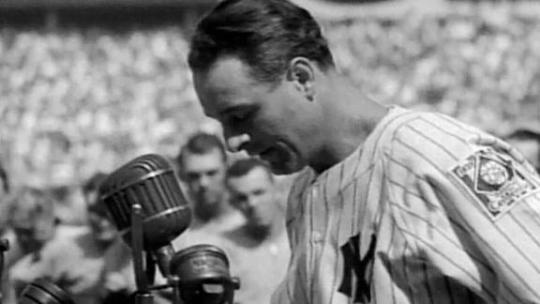

Lou Gehrig, recently diagnosed with Amyotrophic lateral sclerosis, informs a crowd at Yankee Stadium that he considers himself "The luckiest man on the face of the earth", then announces his retirement from major league baseball.
1 note
·
View note